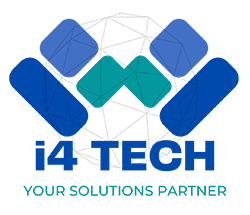Digital Twins Are Powering a New Era of Predictive Intelligence
Introduction
In 2025, digital twins are no longer confined to aerospace and heavy industries—they are becoming essential tools in smart cities, retail, finance, and healthcare. A digital twin is a virtual replica of a physical object, process, or system, continuously updated with real-world data. It enables simulation, optimization, and prediction with unprecedented accuracy.
As AI, IoT, and cloud infrastructure evolve, digital twins are delivering immense value through real-time insight and foresight.
What Is a Digital Twin?
A digital twin is a dynamic software model that mirrors the current state and behavior of a real-world entity. It uses data from sensors, cameras, devices, and systems to represent everything from a jet engine to an entire hospital.
For example, in a smart building, a digital twin may track HVAC performance, occupancy, and energy usage—allowing for real-time monitoring and predictive maintenance.
Where Digital Twins Are Making Impact in 2025
1. Manufacturing
- Simulate factory workflows to reduce downtime
- Detect bottlenecks and optimize supply chains
2. Smart Cities
- Model traffic flow, energy consumption, and public transport in real time
- Run “what-if” scenarios for events like floods or large gatherings
3. Healthcare
- Twin of a patient’s body based on genetic, lifestyle, and clinical data
- Simulate responses to treatments or predict risks of complications
4. Real Estate & Architecture
- Virtual replicas of buildings that track lighting, water use, and structural integrity
- Improve tenant experience and reduce energy waste
Benefits of Digital Twins
- Predictive Maintenance: Spot issues before they cause failure
- Scenario Planning: Test strategies without physical risk
- Personalization: Create user-specific models for healthcare, finance, or training
- Cost Reduction: Avoid unnecessary maintenance, delays, or energy usage
Digital Twin + AI = Smarter Systems
When paired with AI, digital twins become more than just mirrors—they become advisors. AI analyzes historical and real-time data within the twin to suggest improvements, flag anomalies, or automate decisions.
For instance, a logistics company could simulate delivery routes, weather, and driver behavior to optimize schedules and fuel usage without trial and error in the real world.
What Businesses Should Do
- Identify Valuable Assets: Start with machines, spaces, or systems where downtime is costly
- Invest in IoT Infrastructure: Accurate, real-time data is the backbone of any twin
- Choose the Right Platforms: Azure Digital Twins, Siemens, and Dassault offer ready solutions
- Plan for Integration: Ensure interoperability between physical systems and digital models
Conclusion
Digital twins are not just for engineers or scientists—they are business tools for strategy, sustainability, and success. In 2025, they’re being used to predict the future, simulate complexity, and personalize experiences. As more industries embrace this powerful technology, the real and digital worlds are converging like never before.


